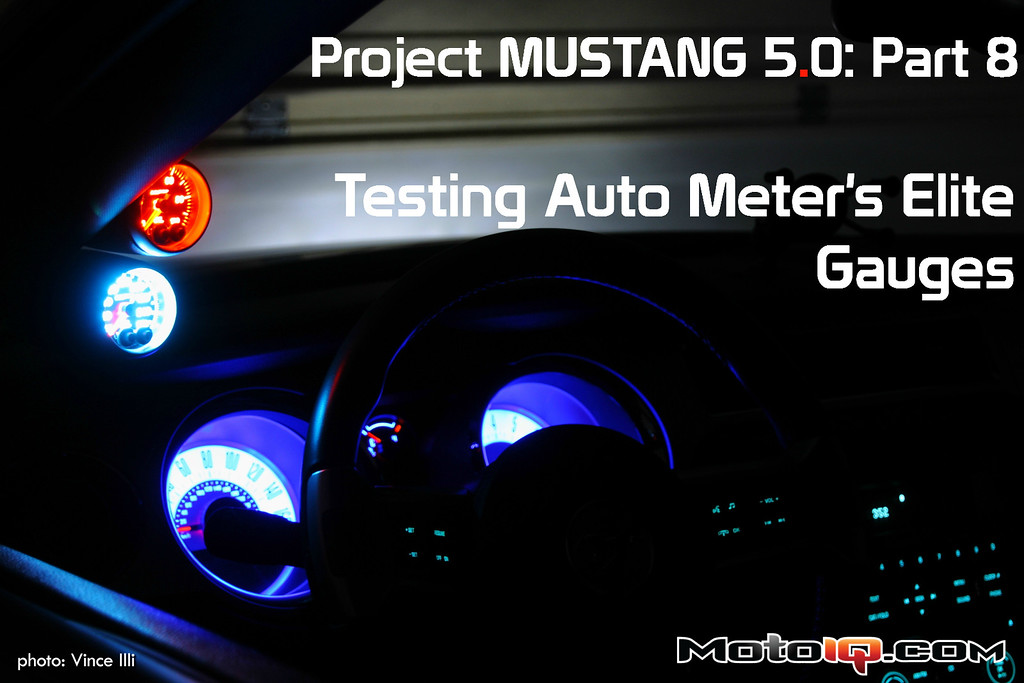
Project Grey Mustang 5.0: Part 8 – Testing Auto Meter’s Elite Gauges
Most “gear heads” want to know all the vital signs of their car. Monitoring parameters such as oil pressure, coolant temperature, and exhaust gas temperature will tell you if your car is running at its optimum or if there might be something wrong. The problem is that modern cars are coming equipped with fewer and fewer gauges. There was a time in the ‘80s when even a pedestrian Plymouth Sundance came with voltage and coolant temperature gauges that actually told you meaningful data about how the engine was running. Now, some cars don’t even have a temperature gauge, and often the gauges that they do have are little more than glorified “Idiot Lights” that only move their needles when something bad has already happened.
Project Mustang is, unfortunately, one of the latter. Although the dash of Premium models came equipped with a whopping six gauges (almost unheard of anymore outside of trucks), most of the gauges don’t actually tell you much of anything. The worst offender, in my opinion, is the oil pressure gauge, which I have never seen move even once after starting the engine up. Because oil is the lifeblood of the engine, it is important to be able to monitor it. So we contacted Auto Meter, and they sent us two of their new Elite Series electric gauges: Oil Pressure and Oil Temperature.

If you ever take a trip to your local auto parts big-box store and look at the gauge section, you’ll find that there is a huge range of quality when it comes to gauges. You can immediately tell upon opening these boxes that the Elite gauges are of the highest quality.

If you’ve ever installed an electric gauge before, you know that there are generally 4 connections that you require: power, ground, illumination, and sender signal. So what is all THIS?!






1 comment
The article provides a detailed insight into the testing of Auto Meter’s Elite Gauges on the Project Grey Mustang 5.0.